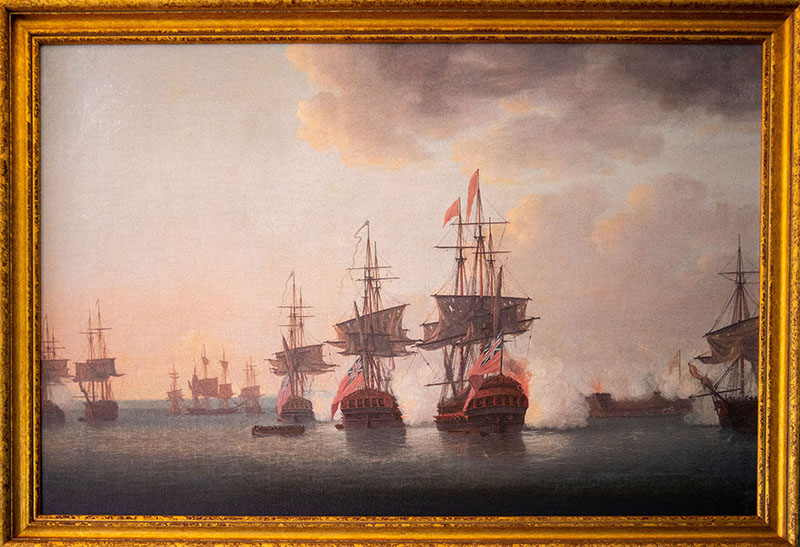𝘈𝘵𝘵𝘢𝘤𝘬 𝘰𝘧 𝘍𝘰𝘳𝘵 𝘔𝘰𝘶𝘭𝘵𝘳𝘪𝘦

| Maker | Lt. William Elliott |
| Date of Creation | 1776 |
| Location | Made in England; Depicts Charleston, South Carolina |
| Materials | Oil on canvas |
| Institution | Historic Charleston Foundation |
| Credit Line | Courtesy of Historic Charleston Foundation |
| Accession Number | N/A |
| Photo Credit | Liza Holian |
Originally known as Fort Sullivan, Fort Moultrie was constructed in 1776 during the American Revolution. During the war, American general William Moultrie and his South Carolina unit of 435 men took control of Sullivan’s Island and built a small fortification to protect Charleston Harbor. The fort was constructed with rows of palmetto logs reaching ten feet high and filled with 16 feet of sand reinforcement. American troops defended Fort Moultrie against a British naval attack on June 28, 1776, just days before the Declaration of Independence was signed. This scene is titled “Charlestowne South Carolina. The Abortive Attack of Fort Moultrie by British Naval Force Under Commodore Sir Peter Parker consisting of HMS Bristol, Active, Experiment, Solebay, Actaeo, Syren, Sphinx and Bomb Vessel Thunder.” Nine British warships surrounded the fort and bombarded it for hours, hoping to gain access to the Charleston Harbor. Although the fort had not been completed, the British cannons could not penetrate the wood, and the giant walls of sand absorbed the shock of the artillery. As the battle commenced, William Moultrie raised a navy-blue flag with a crescent moon with the word “liberty” sewn into it. On June 28, the damaged British fleet retreated at the end of the day, and Moultrie and his men celebrated Charleston’s successful defense. Relieved and elated by the victory, the fort’s name was changed to honor William Moultrie and their heroism during the battle. The Continental Army continued to use the fort to protect Charleston, SC, watch for incoming ships from the Royal Navy, and protect commerce ships bringing supplies into Charleston Harbor. The current South Carolina flag features a cresent moon and a palmetto on a blue field, linking state pride and identity to the brave soldiers who defended the harbor during the Battle of Fort Moultrie.
